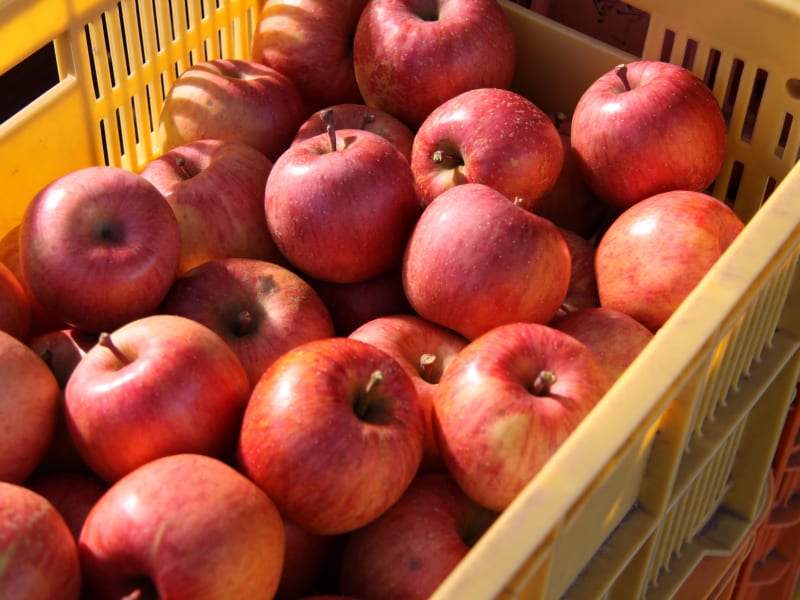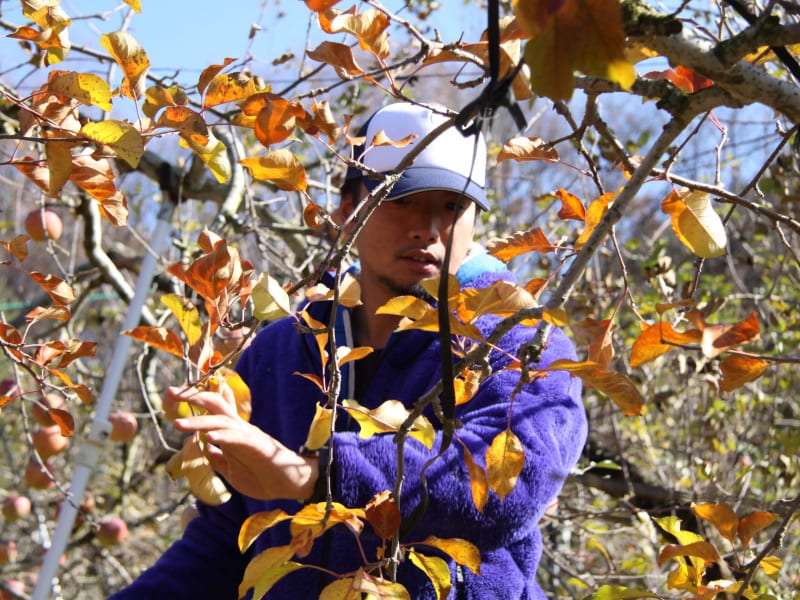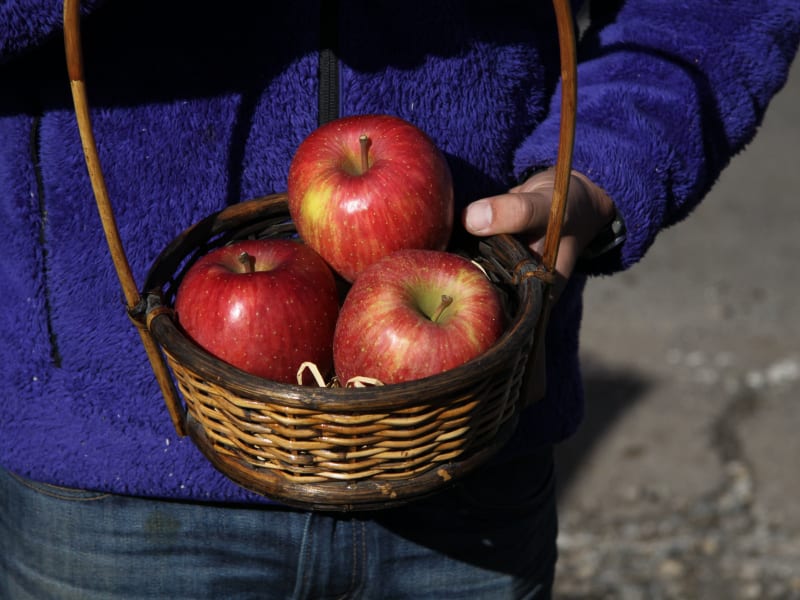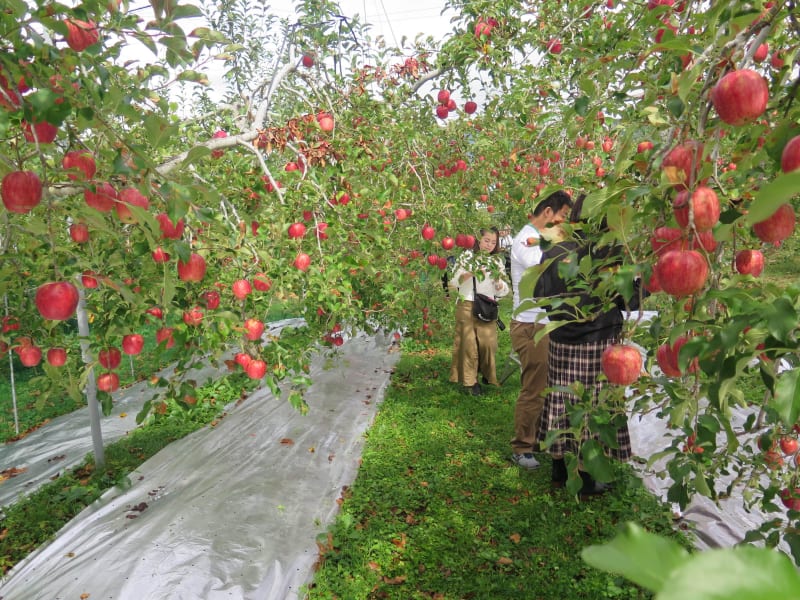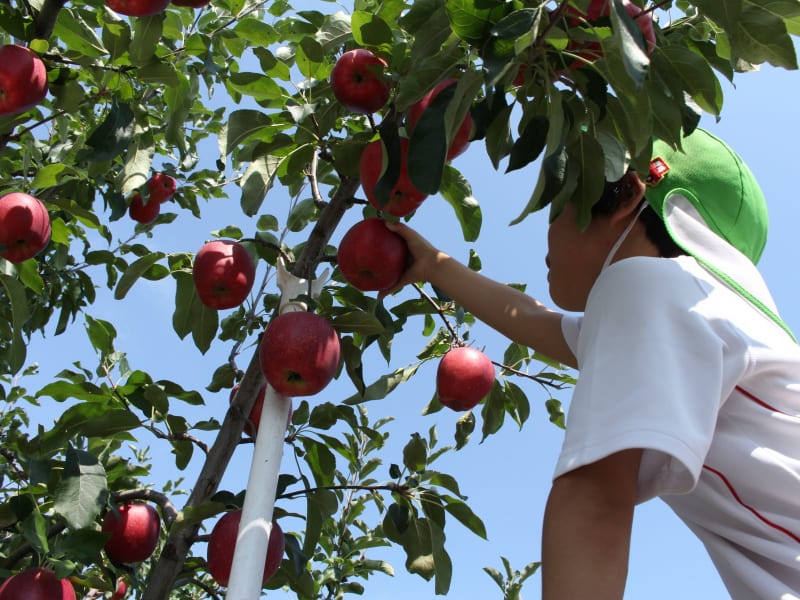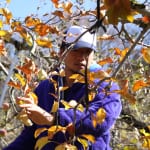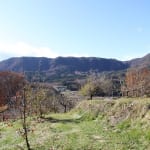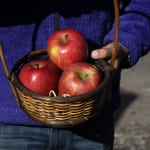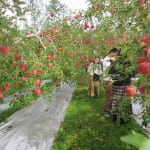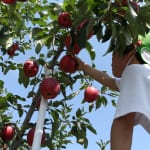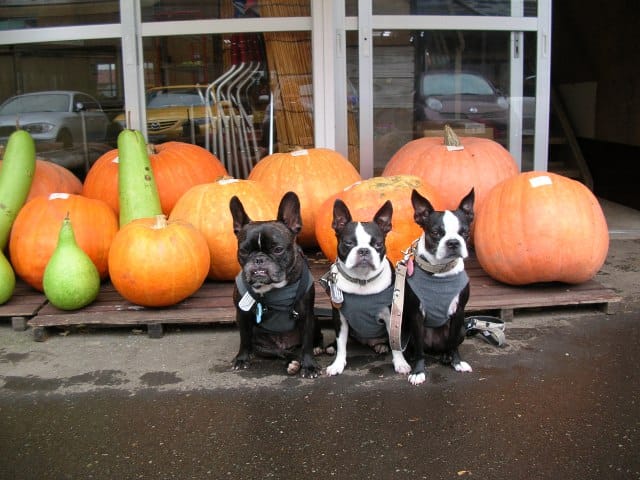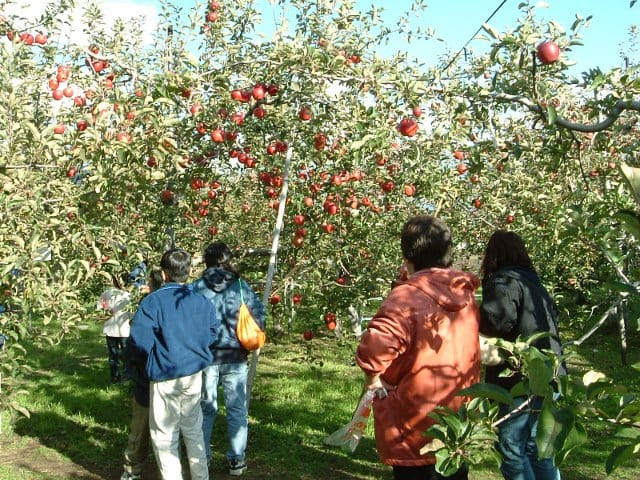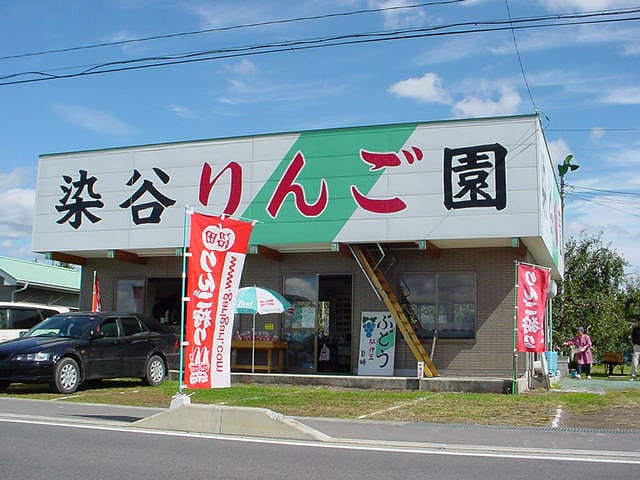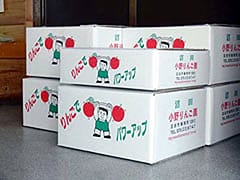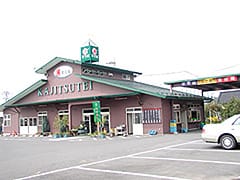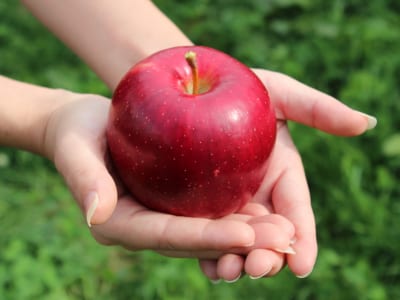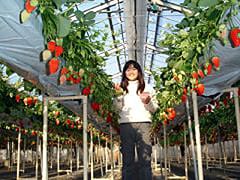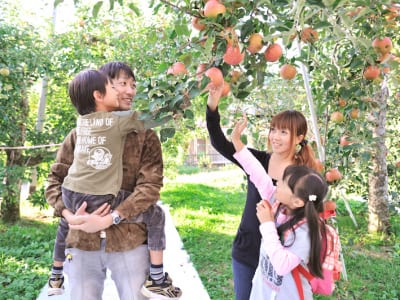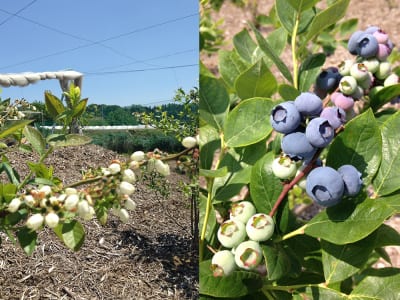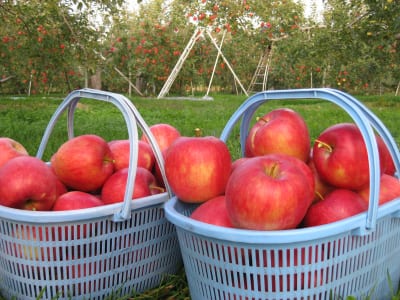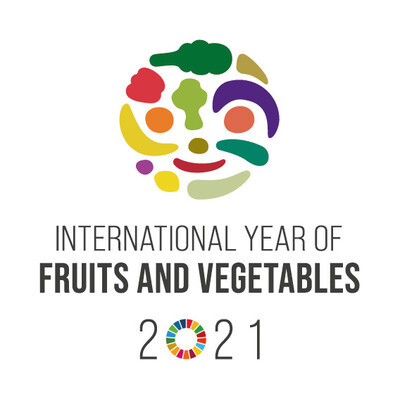About apples in Gunma prefecture
- Apples

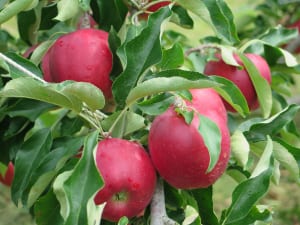
Apples
Some popular apple varieties can only be purchased in Gunma.
Yoko (from mid- to late October):
This type of apple is known for its large size and bright crimson skin. The white flesh is juicy and firm, possessing an great taste that is both sweet and tangy.
Gunma Meigetsu (from late October to early November):
The skin of this apple is mainly yellow, but some parts are slightly crimson due to sun exposure. This variety is noted for its “mitsu,” or honey-colored glassiness that is sweet and not too tart. Meigetsu is also called the “elusive apple” because it often sells out.
Oze no Kurenai (from late August to early September):
This large-sized variety known for its dark red skin is harvested in late summer. It has the right balance of sweetness and acidity with a fresh fragrance.
Slim Red (from late October to early November)
This uniquely shaped variety with firm skin is very juicy.
Benizuru (from early to mid-October)
Developed in 2016, this original variety from Gunma features bright red skin. The fruit flesh has a refreshingly tangy taste and crisp texture.
Producer interview
Apple Producer: Keisuke Ono
Apples are the fall-season fruit to try Gunma.
Apple cultivation in Gunma began soon after the Second World War, expanding into the northern semi-mountainous areas of the prefecture. Boasting a long history and prosperous harvest, Gunma continues to produce original and unique apple varieties.
Compared to Aomori and Nagano prefectures, renowned for their apple production, Gunma’s own share is far outnumbered. However, we recommend visiting to taste these ruby fruits for yourself. You can also purchase apples at orchards or produce stands.
We had the opportunity to interview Mr. Keisuke Ono, an apple farmer based in Sayama, Numata City.
Sayama is one of many prosperous apple production districts cultivated by young, hard-working farmers. The area is home to many fruit-picking farms and produce markets. They are also considering to export their products overseas.
Mr. Ono There is no other fruit that Japanese people love as much as apples. Customers of all ages come to our orchard to purchase our products every year. I think apples are the only fruit adored to this extent by so many people. Nowadays, Japanese apples are becoming familiar and popular with people overseas.
Sayama has always been an apple production area. I also come from a line of apple growers since my father’s time. We gradually expand our crops over time, currently growing the numerous apple varieties. These include Shinano Red, Akibae, Himekami, Akagi, Fuji, Slim Red, Oze-no-Kurenai, and a popular local variety called “Gunma Meigetsu.” We also grow other fruits such as peaches, Asian and European pears, and grapes in small quantities.
After much trial and error, Mr. Ono used his insight to produce delicious apples. In our interview, he reveals how he finally found his inspiration for agriculture.
Mr. Ono I’m really still experimenting. I have a meticulous way of doing things, but I feel like I’ve finally found what is needed to produce delicious apples.
Nowadays, I think fertilizer is the most important factor. We, of course, do not use chemical fertilizers. Our produce is grown organically with microbial fertilizers, and the way the fertilizer is applied is essential. The application method can alter the juiciness and sweetness when biting into an apple. Should all trees be given the same amount? The answer is no, as the best condition is slightly different for each apple tree.
Identifying the needs of each tree creates minor changes in the time and amount needed when spreading fertilizer.
Currently, Mr. Ono cultivates about a thousand apple trees. It’s a tremendous amount of hard work to look after each tree.
Mr. Ono It is hard work.
In winter, we prune the branches from around January to April. Flower and fruit thinning begins in May. During the sweltering August heat, we trim weeds that have grown too long in the apple orchards. Recently, the summers have been very hot. Even in this area, the temperatures are quite high. The weeds grow faster when this happens. Alternatively, we can’t cut the shrubs too short, as bugs will swarm if they’re cut too short. However, wild boars and deer can damage the fields if we leave the weeds too long. The shrubs are trimmed at least once a week and remain at a reasonable length. The weeds are cut regardless of rain or shine during this season.
Then, we await the harvest. Apples have different harvesting times depending on their varieties. The earliest period begins from September, changing in variety about every two to three weeks. We’re constantly harvesting, shipping, and selling our apples until December each year.
What is the most labor-intensive variety? Each type requires a lot of time and labor, but the Slim Red has the most flowers. So, flower thinning these trees to bear plenty of fruit is hard work. The trees also grow thick leaves, and the apples won’t become sweet without the sun if the leaves are untouched. Trimming the leaves is another labor-intensive process. That’s why the Slim Red is the most troublesome. Even so, the variety has the ideal apple firmness, a long shelf life, and superb flavor when grown with care. It’s an excellent apple to produce despite the painstaking effort.
The Gunma Meigetsu, developed in Gunma Prefecture, has long been a fan-favorite. It is a yellow-hued apple with a tinge of red. The way the nectar penetrates the flesh is amazing. When cut horizontally into round slices, the marbling nectar can be found throughout the fruit. Our customers are always surprised by its intense flavor when sampling a piece. The sweetness is exceptional.
Produced in small quantities, it has a short harvesting period that lasts from late October to early November. This is why it is known as the “illusory apple.” If you visit Gunma during the harvest season, you will be able to purchase this rare fruit.
We asked Mr. Ono, who grows several different varieties, the secret behind recognizing a delicious apple.
Mr. Ono First, [you should examine] the color. Red apples should be ruby-red, and yellow apples should be completely yellow. This will easily indicate their delicious flavor. Look at the apple’s stem. A yellower hue is a sign of the apple flower blooming, which indicates it will be more delicious.
Here’s a tip on how you should eat apples. Most people peel the skin and cut their apples vertically, right? However, the round slices should be cut horizontally then nibbled on like a cracker. Not only is this easier to eat than peeling an apple, but the peel also contains a lot of nutrition. The peel and core, a part that often gets thrown away, can also be eaten without waste. It’ll save the trouble of peeling an apple. I recommend this method.
When harvest season arrives in Gunma, produce stands with a variety of local apples line the roads and roadside stations. Apple picking can be enjoyed at most orchards. Mr. Ono hopes many travelers will visit and have fun apple picking.
Mr. Ono The apples sold at supermarkets are shipped out before they become ripe. Places like Aomori Prefecture, in particular, are so far that it’s impossible to ship their produce at full ripeness. On that note, you can eat ripe fruit straight from the tree that is sweeter and more delicious when apple picking.
Fortunately, Gunma is the closest apple production area to Tokyo. If you come on your day off of work, you’ll be able to savor fresh, ripe apples. We have several varieties that appear continuously throughout the season, so I hope you’ll often visit and experience the joy of discovering your favorite apple.
On the other hand, there’s a scary part of being recognized as the producer. You don’t want to be told that the product purchased at your store wasn’t good, right? We continue our daily research to prevent this worst-case scenario. We want you to go home completely satisfied since you purchased our products. Our goal is to grow fruit we can recommend with confidence.
We want customers to come to regularly select our fruit, grow appealing products, and to satisfy the people who have come all the way to visit our orchard. We continue pursuing apple production whilel figuring out how to achieve these goals.
Apple Farm in Gunma Prefecture
| Farm Name | Toge-no-Ono Apple Orchards |
|---|---|
| Phone Number | 0278-23-9358 |
| Address | Numata, Sayama 847 |

